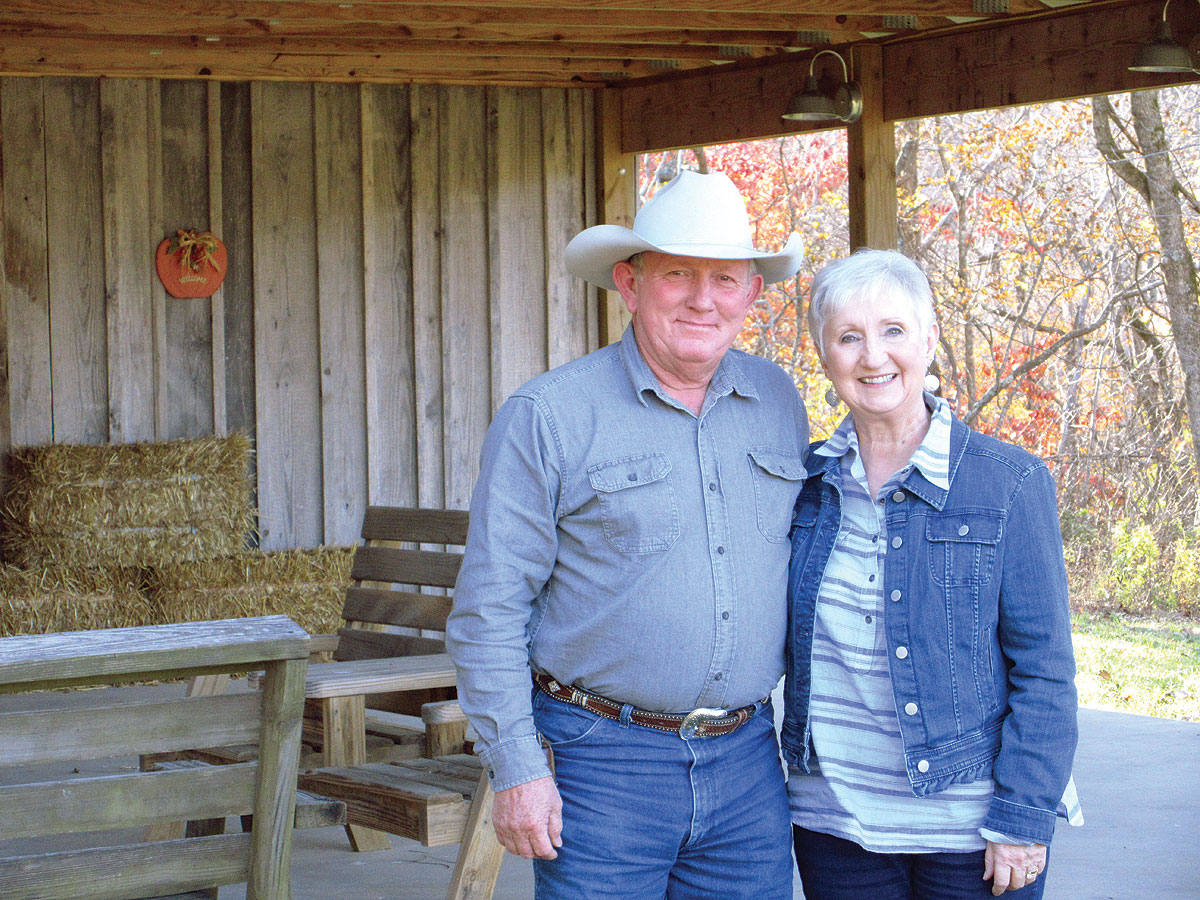
Georgia and Monty Williamson began their marriage in 1967, but their love for Herefords goes back much further
Georgia and Monty Williamson were relative newlyweds when they purchased their farm northwest of Mountain View, Mo., in 1969.
In the following decades, they raised two daughters, Lori and Lisa, established a respected herd of registered Hereford cattle, and took part in instrumental changes that shaped the Ozarks we know today.
Both are area natives and grew up on farms in the area.
When they married in 1967, they shared a love of cattle. Hereford cattle, to be exact. Georgia recalls obtaining her first registered Herefords from her grandfather, Elmer Beltz, when she was merely 9 or 10 years old. Monty likewise purchased his first registered Herefords from Elmer. Georgia said her love of the breed was partly a sentimental family connection, but both she and Monty praised the breed’s docility and ability to “do more with less” as foragers.
“We just love ‘em,” Georgia remarked. “Is there anything any prettier?”
As newlyweds, Georgia and Monty moved into an old farmhouse north of what is now NN Highway. In true pioneer spirit, they didn’t let the fact that the house had no doors or windows discourage them. It had also been used to store hay.
Monty recalled the two of them scooping out 4 to 8 inches of loose hay from the floors when they first moved in.
“We was livin’ on taters and love,” Monty recealled with a chuckle.
A couple years later, a neighbor suggested the absentee owner of farm on which their house was located might be persuaded to sell. Georgia and Monty bought their house and the surrounding 160 acres.
Monty installed the first fence the farm had ever known of wooden posts and four-strand barbed wire.
When Georgia and Monty first bought their farm, the area was also heavily wooded. The few small pastures grew warm season native grasses and Lespedeza. Monty explained that most people in the area owned a few dairy cows that were milked either by hand or machine, and their beef cattle were not the local norm. He recalled cattle owners had no choice but to utilize the limited grass and pasture available at the time and to feed hay during the fall, winter and dry months. But that was all about to change.
As early as the 1950s, Georgia’s grandfather, Elmer Beltz, began clearing his land by defoliating trees from the air, then bulldozing and burning standing trees. When the land was bare, he seeded a new grass which he hoped would fill in the cool-season gap: Kentucky 31 Fescue. Monty acknowledged KY 31 is imperfect due to its endophyte toxicity, but added the negative effects can be controlled with proper management. He said when KY 31 was first introduced to the area, “it was the salvation of the livestock business in the Ozarks.”
He said almost everyone in the 1940s and 1950s had a few diary cows but many began to work in town and phase out their dairy herds by breeding their dairy cows to beef bulls to change into beef production. The addition of KY 31 allowed cattle owners to graze their animals more and feed hay less.
Monty recalled Georgia’s uncle, John Beltz, taking him over to Grandpa Beltz’ place in 1966 and showing him what Georgia and Monty’s pasture could look like growing KY 31 Fescue. Monty said he saw grass “this tall,” holding his palm about 18 inches above the floor, “and just laid over, there was so much grass,”
Monty adopted the Beltz’ practice and, as a result, their cattle went from thin to “nice looking animals.” Monty elaborated that Missouri cattle would still be eating “oak sprouts and turnip tops” if it wasn’t for Kentucky 31 Fescue.
The Williamsons were showing their registered Herefords in the 1980s at local county fairs when one of their bulls, named Craftsman, caught the eye of Carl Duke and Ken Smith, who were the manager and showman for RTC Ranch, located north of Mountain View. RTC Ranch purchased part ownership of Craftsman and Ken showed him extensively at state fairs in the Midwest, as well as national shows such as the American Royal in Kansas City. Monty proudly stated Craftsman won the Louisville (KY) Grand Champion during this time.
Monty is passionate about breed standards and genetic purity of the Hereford breed, which manifests in the genetic quality of their own herd. He is determined to do his part to paint a bright future for the breed.
Their granddaughter, Emily, shares his passion and she and Monty have teamed up to take their herd genetics forward to the next generation. Monty noted that “we are in a high-tech age” and “if a producer doesn’t have performance in his herd’s genetics and/or is incapable of using modern technology, he is going to be left behind, no matter which breed he raises.” He said Emily has a great interest and knowledge of this technology. Emily’s brother, Ty, currently attends College of the Ozarks and also has an interest in teaming with Emily in what the siblings somewhat jokingly term their “Hostile Takeover” of the Williamson farm. Georgia and Monty’s other granddaughter, Olivia, is only 6-years-old. But they suspect she will grow up to share her cousins’ love of the family farm.
Now, with the future of their farm in good hands, Georgia and Monty are turning their focus to their latest venture, sharing the beauty of their land with others in a budding hospitality business. They are in the process of finishing a barn-like structure which they intend to rent out as a venue for weddings, family reunions and other outdoorsy get-togethers. They also have a secluded cabin that fronts Pine Creek which they are renting on Air BnB.






